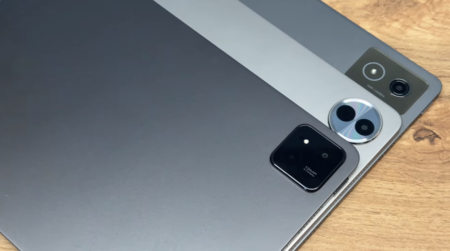When September arrives, for many it means the same: return to studies. It doesn’t matter the race that is being pursued, having the right tools always makes a difference when rendering to the maximum. The laptop is still a safe bet, but it is not the only one. Tablets have become an increasingly solid optionand in some cases they can even match or overcome the computer in certain tasks.
In WorldOfSoftware we resume our format Versus In our YouTube channel, in which we face face to face devices to discover which one is worth more. We already did it with sports watches of less than 200 euros and with two of the most popular Amazon air fryers. Now the focus is on three very competitive tablets: Xiaomi Pad 7, Honor Pad 10 and Lenovo Idea Tab Pro.
Our partner Ana Boria has tried these three models, which They are 350 eurosto check if this budget is sufficient to face your mission. For her, there are undeniable aspects: a large battery “to endure without problem as little, an entire day of institute or university, several storage options, and sufficient processor and RAM.”

Although they start from a similar Price, their differences are evident. The screen size is the first detail that attracts attention. “Of course, to use them in hand, the most comfortable and manageable is Xiaomi,” says Ana. His impressions about the other two are more critical: one feels too large and another adds more weight than expected.
The perspective changes when placing them on the table. “To use them on a table, with keyboard or pencil, The truth is that the 3 are very comfortable. To write a lot or read, you appreciate having an extra inches. ”In addition, not everything is productivity, and in the entertainment section preferences may vary.
“The 3 tablets have very good quality LCD screens. It has a lot of resolution, high level of detail, good colors and technologies that help reduce eye fatigue,” he explains. Even so, there are differences in resolution and refreshment rate that should be taken into account. The complete comparison is in the video.


Ana also analyzed cameras, sound and performance. “Although on paper and according to benchmarks, The Xiaomi tablet processor is betterthe truth is that the 3 behave wonderfully, ”he says. None of them gave it problems in their work sessions or in times of leisure.
In an academic scenario, accessories make a difference. “For me, without a doubt, the keyboard is an almost mandatory purchase. If you are going to use the tablet to take it to class and take notes and notes, I think it is the most comfortable and quick way to work. I already tell you that when I used the Lenovo, I was missing a lot,” he says.

The comparative also covers autonomy and artificial intelligence functions. After reviewing all the points, there is a clear winner. You can discover it in our last Versus: The final verdict is there, ready to help you decide. And if you feel like it, share your opinions in the comments, both here and on YouTube.
Images | WorldOfSoftware
In WorldOfSoftware | Samsung Galaxy Tab S11 and S11 Ultra: The new S Pen is the star of armed tablets to teeth










